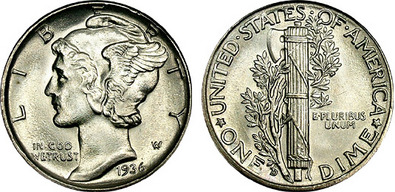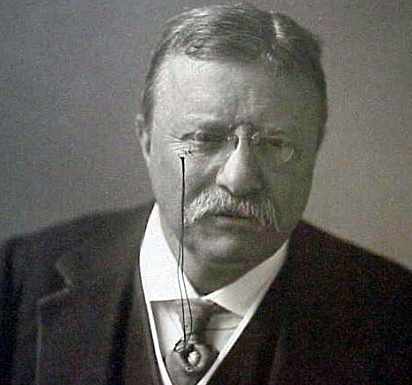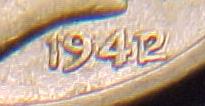
Teddy Roosevelt and new coin designs
 Theodore Roosevelt was an expansionist. According to historian Howard Zinn, Roosevelt stated in a letter,
"I should welcome almost any war,for I think this country needs one." During his presidency, he initiated military action in Columbia,
Honduras, the Dominican Republic, Syria, Absynnia, Panama, Tangier, Morocco, Korea, and Cuba.
Roosevelt cared about asthetics. He initiated conservation efforts for national Parks-- but the one thing that Roosevelt hated
most of all was our coins, which he found insipid.
And so Roosevelt hired artists such as Adolph Weinman and Augustus St. Gaudens to create a new golden
age for US coins.
The sculptor Adolph Weinman designed the Mercury dime and the Walking Liberty half dollar. Weinman was born in Germany in 1870 and immigrated to the United States at age ten, when he studied with Augustus
St. Gaudens.
Theodore Roosevelt was an expansionist. According to historian Howard Zinn, Roosevelt stated in a letter,
"I should welcome almost any war,for I think this country needs one." During his presidency, he initiated military action in Columbia,
Honduras, the Dominican Republic, Syria, Absynnia, Panama, Tangier, Morocco, Korea, and Cuba.
Roosevelt cared about asthetics. He initiated conservation efforts for national Parks-- but the one thing that Roosevelt hated
most of all was our coins, which he found insipid.
And so Roosevelt hired artists such as Adolph Weinman and Augustus St. Gaudens to create a new golden
age for US coins.
The sculptor Adolph Weinman designed the Mercury dime and the Walking Liberty half dollar. Weinman was born in Germany in 1870 and immigrated to the United States at age ten, when he studied with Augustus
St. Gaudens.
The god Mercury
 As I'm sure you recall from your mythology classes, Mercury was the Roman messenger god, who helped with trade and
commerce.
Mercury has been honored by having several things named after him: the element Mercury; the planet, Mercury,and of course,the Mercury dime.
The dime however, was not intended to depict the god Mercury, but instead was a depiction of Liberty with wings, an allegory for
liberty of thought.
<
As I'm sure you recall from your mythology classes, Mercury was the Roman messenger god, who helped with trade and
commerce.
Mercury has been honored by having several things named after him: the element Mercury; the planet, Mercury,and of course,the Mercury dime.
The dime however, was not intended to depict the god Mercury, but instead was a depiction of Liberty with wings, an allegory for
liberty of thought.
<
As part of the "golden age"of US coins, Mercury dimes are highly collectable. Many collectors attempt to obtain pristine specemins, especially well struck coins that exhibit "full split bands." Others simply try to obtain all the dates and mintmarks. The one rare coin in the series is the 1916D, which is one of the classic US rarities. The denver mint produced only 264,000 that year. Most of the early mercury dimes are well worn. The other scarce dates are 1921 and 1921D.
1942: 2 over 1
 The best known mint error occured in 1942, where the 2 appears with an extra 1 in a small number of coins minted in Philadelphia.
A similar error exhists for the denver minted coins in which the 42 appears over a 41.
The best known mint error occured in 1942, where the 2 appears with an extra 1 in a small number of coins minted in Philadelphia.
A similar error exhists for the denver minted coins in which the 42 appears over a 41.